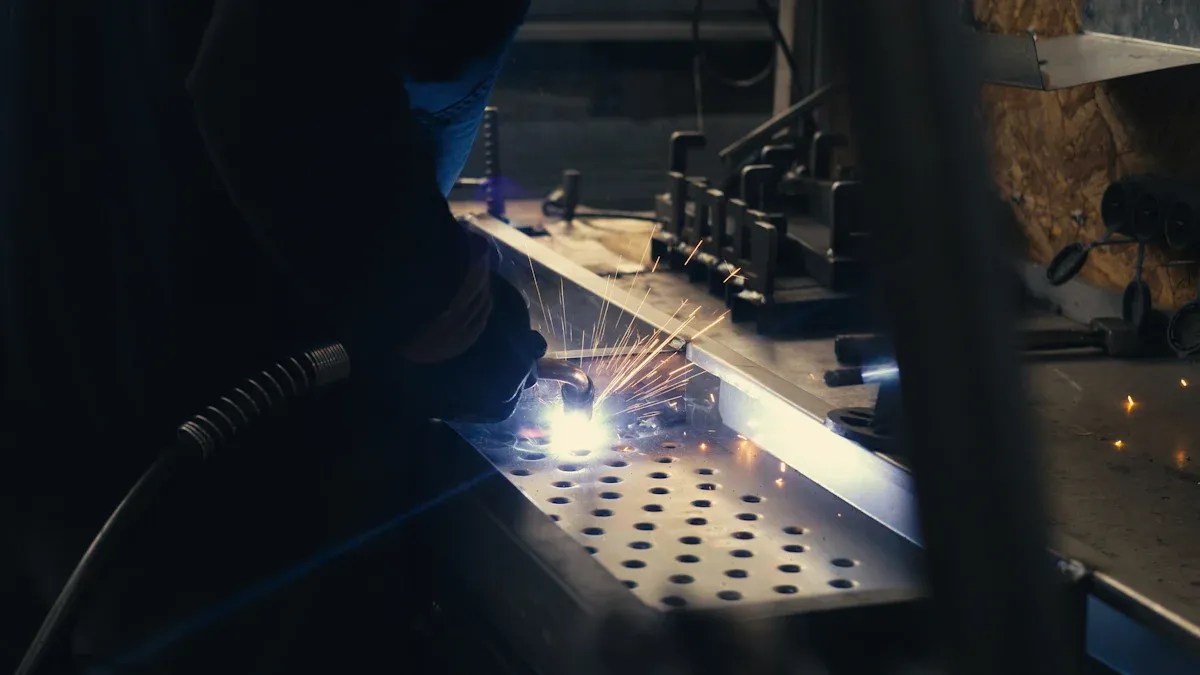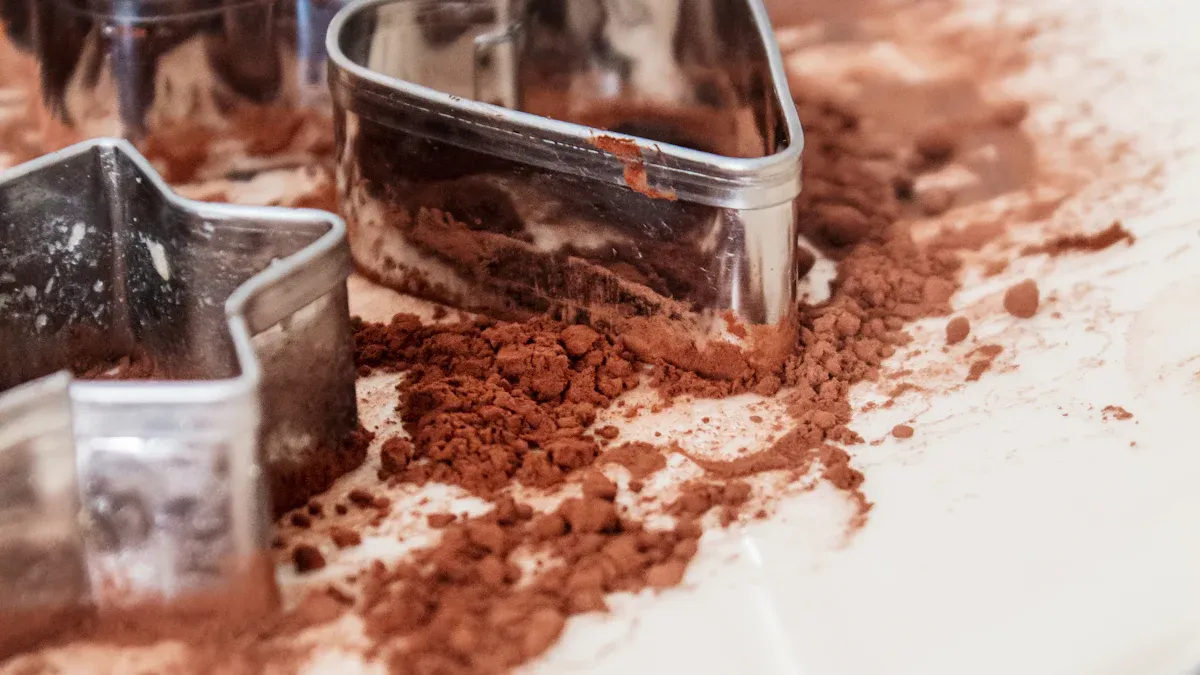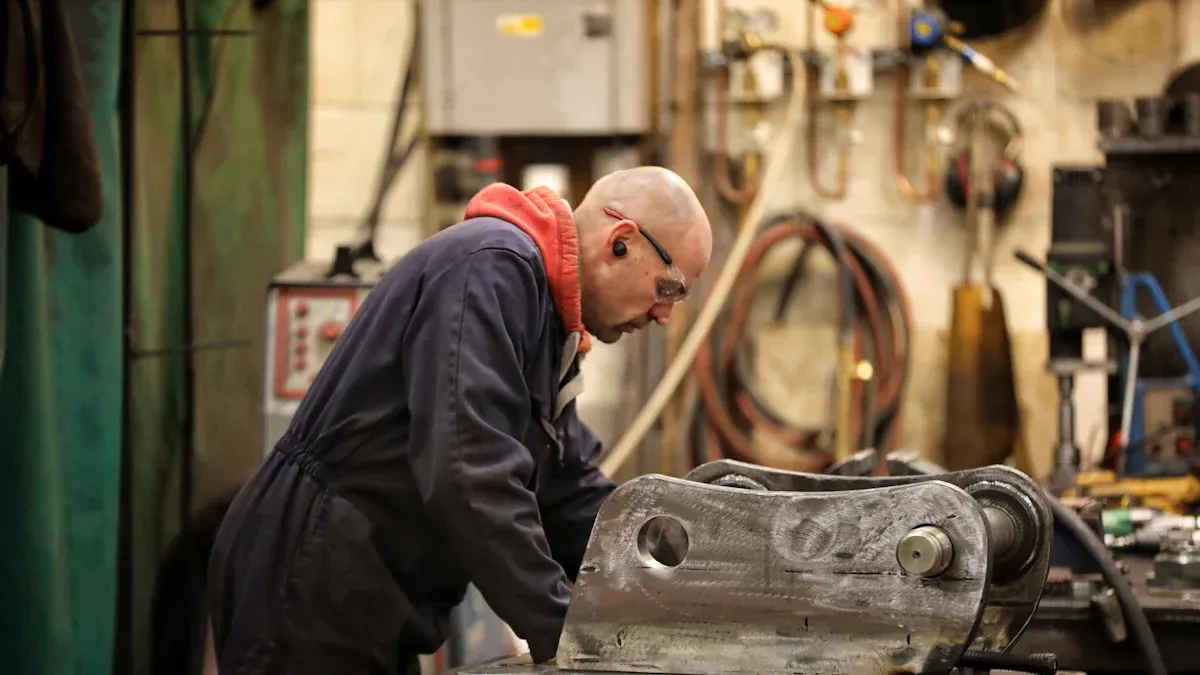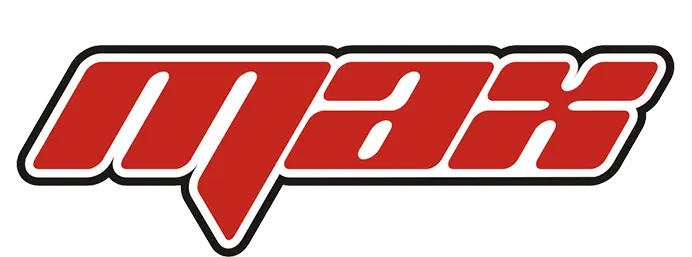
You need to make smart choices at every stage of powder metallurgy part creation. When you select the right material and focus on optimization, you help your powder metallurgy part reach high performance and reliability. Each design decision matters. Even a small change in manufacturing steps can affect how well a powder metallurgy part works. Careful attention to these details leads to powder metallurgy parts that meet strict standards and save costs.
Material Selection for Powder Metallurgy Part Optimization

Choosing the Right Powder for Manufacturing
You start the process by picking the right powder for your powder metallurgy part. The type of powder you choose affects the strength, weight, and durability of your parts. In the automotive and aerospace industries, you often see iron-based alloys, aluminum-based alloys, titanium-based alloys, and nickel-based alloys. Each material offers unique advantages for different applications.
| Material Type | Key Properties | Applications | Advantages |
|---|---|---|---|
| Iron-Based Alloys | Good mechanical strength, heat-treatable | Automotive components, structural parts | High strength-to-cost ratio, adaptable through alloying |
| Aluminum-Based Alloys | Low density, good corrosion resistance | Aerospace lightweight components, heat sinks | Reduces weight while maintaining strength |
| Titanium-Based Alloys | High strength-to-weight ratio, excellent corrosion resistance | Aerospace structural components, medical implants | Exceptional strength with reduced weight |
| Nickel-Based Alloys | Exceptional corrosion resistance, high-temperature strength | Gas turbine components, chemical processing | Maintains properties under extreme conditions |
You can use this table to compare materials and select the best option for your application. This step sets the foundation for successful optimization.
Assessing Material Properties for Design Optimization
You need to look at key material properties before you move forward with design optimization. These properties include tensile strength, yield strength, fatigue strength, impact resistance, ductility, and wear resistance. Each property affects how your powder metallurgy part will perform in real-world conditions.
| Mechanical Property | Description | Example Values |
|---|---|---|
| Tensile Strength | Load-bearing capacity before failure. | Ferrous metal powder parts can reach 900 N/mm², increased to 1200 N/mm² through heat treatment. |
| Yield Strength | Stress at which permanent deformation occurs. | FC-0205-30 has a yield strength of 240 MPa; FC-0208-50 achieves 380 MPa after sintering. |
| Fatigue Strength | Ability to withstand cyclic stress. | FC-0208-50 shows an RBF fatigue limit of 160 MPa; FL-4405-40 delivers 190 MPa in as-sintered state. |
| Impact Resistance | Resistance to shock or collision loads. | Improved by controlling alloy composition; adding 1-4% nickel enhances impact resistance. |
| Ductility | Ability to deform under tensile stress. | Ferrous material components typically show about 2% ductility. |
| Wear Resistance | Ability to withstand degradation from friction and abrasion. | Carburized PM parts exhibit improved wear resistance with optimized processing parameters. |
Tip: Always match the material properties to your customer’s environment and performance needs. Consider corrosion resistance, wear handling, and required strength or hardness for your application.
Avoiding Common Material Selection Pitfalls
You can avoid problems by following a few simple steps during material selection. Focus on consistency in performance, machinability, and cost. Make sure you control processing parameters and use effective post-processing techniques. This helps you achieve reliable results and keeps your manufacturing process efficient.
- Careful selection of materials
- Precise control of processing parameters
- Effective post-processing techniques
- Consistency in performance
- Machinability
- Cost considerations
If you pay attention to these details, you set yourself up for successful powder metallurgy part optimization. You reduce the risk of defects and ensure your parts meet all design and performance requirements.
Design Optimization for Powder Metallurgy Parts
Optimizing Part Geometry and Wall Thickness
You shape the strength and quality of your powder metallurgy part by focusing on geometry and wall thickness. The way you design the part affects how it performs and how easy it is to manufacture. Complex geometries can be created with powder metallurgy, but you need to optimize the shape for pressing and sintering. Avoid sharp corners, thin sections, and deep recesses. These features can make manufacturing difficult and may cause defects.
| Geometric Feature | Influence on Strength and Manufacturability |
|---|---|
| Part Geometry and Complexity | Determines mechanical properties and overall quality. |
| Wall Thickness | Variations can lead to uneven densification and strength, possibly causing defects. |
| Tolerances | Ensures parts meet strict design and performance requirements. |
| Layer Thickness | Affects manufacturing time and accuracy. Thicker layers may increase volumetric errors. |
Consistent wall thickness is important. If you use thin walls, you risk fragility and distortion during heat treatment. Most powder metallurgy parts need a minimum wall thickness between 0.06 and 0.08 inches. Thinner walls can reduce yield strength by up to 33% and ultimate tensile strength by up to 30%. You also see changes in microhardness and dislocation density in thinner samples. Post-processing can help refine the microstructure and improve mechanical properties.
Tip: Keep wall thickness uniform to prevent density variation and maintain strength throughout the part.
You achieve better optimization when you balance geometry and thickness. This approach helps you avoid defects and ensures reliable performance.
Managing Holes, Radii, and Flanges in Design
You need to pay close attention to holes, radii, and flanges when you work on design optimization. These features influence both the manufacturability and the cost of your powder metallurgy part. If you design holes and flanges without considering the process, you may face higher costs and lower quality.
| Design Aspect | Recommendation |
|---|---|
| Sharp Corners | Avoid sharp corners. Use flat surfaces with a minimum width of 0.3 mm to reduce stress concentrations. |
| Chamfers | Use chamfers at 30° or 45° instead of radii. This prevents burrs and lowers tooling costs. Minimum width for chamfering should be 0.13 mm. |
| Flanges | Keep flanges small enough for easy ejection. Use generous radii at the bottom flange edge and juncture. |
| Holes | Design holes in various shapes along the pressing direction. Consider lightening holes to reduce weight. |
The placement and size of holes affect durability and performance. Complex designs may increase production costs if not optimized. Flanges need proper length and contact points during bending to maintain quality and control costs.
- Avoid sharp corners to reduce stress and improve manufacturability.
- Use chamfers instead of radii for easier processing.
- Design holes along the pressing direction for better efficiency.
- Keep flanges manageable for smooth ejection and high precision.
You improve the process and reduce costs when you follow these design guidelines.
Ensuring Manufacturability and Cost Efficiency
You must consider manufacturability and efficiency during design optimization. Limiting part complexity helps you produce powder metallurgy parts with uniform thickness and fewer defects. Two-dimensional profiles are easier to manufacture and allow for better control over density and mechanical properties.
| Factor | Explanation |
|---|---|
| Tooling | Precise tooling design ensures uniform density distribution. Sharp corners are undesirable; use fillet radius for better processing. |
| Part Complexity | Less complexity makes manufacturing easier and improves uniformity. |
| Compaction Process | Compaction creates a loose shape. Sintering achieves final density and mechanical properties. |
Compaction only creates a loose shape. The final density and mechanical properties are achieved during sintering.
You can save costs by using several strategies:
- Material utilization efficiency reduces scrap rates.
- Reduced machining and finishing achieves near-net shapes, minimizing post-processing.
- High production rates lower per-unit costs.
- Energy savings come from operating at lower temperatures.
- Integration of multiple parts consolidates components, reducing assembly time and inventory costs.
You achieve better precision and performance when you design for manufacturability and cost efficiency. You also improve the overall quality of your powder metallurgy part.
Compaction and Sintering Optimization in Powder Metallurgy
Controlling Compaction Parameters for Uniformity
You need to control compaction parameters carefully to make sure your powder metallurgy part has even density. Uniform pressure in the die is very important. If you do not keep the pressure steady, you can get weak spots or cracks inside your parts. You should also pay attention to how you fill the die, how fast you apply pressure, and how much friction happens along the die wall.
| Compaction Parameter | Effect on Density Uniformity |
|---|---|
| Uniformity of Die Filling | Nonuniform die filling can lead to large-scale density gradients, affecting the overall density distribution. |
| Applied Pressure | Variations in applied pressure can cause uneven density, leading to weak spots and internal cracks in the part. |
| Compaction Speed | The speed of pressure application affects density and integrity; a balance is needed to minimize defects. |
| Die Wall Friction | Influences the stress distribution and can lead to localized density variations if not managed properly. |
You can improve uniformity by making sure the powder fills the die evenly, using the right pressure, and managing friction. This helps you get strong, reliable parts every time.
Enhancing Sintering for Mechanical Performance
You can boost the performance of your powder metallurgy parts by choosing the right sintering temperature and atmosphere. Sintering at high temperatures helps the powder particles bond together better. When you use temperatures between 2100°F and 2300°F, you see a big jump in strength and toughness. If you go above 2500°F, you get even better results, with a fully homogeneous material.
| Sintering Temperature Range | Mechanical Performance Impact |
|---|---|
| Above 2000°F | Initial bonding of particles |
| 2100-2300°F | Significant enhancement of properties |
| >2500°F | Superior strength and toughness, fully homogeneous material |
The atmosphere during sintering also matters. Using hydrogen or nitrogen can prevent oxidation. Argon and vacuum atmospheres protect the workpiece and remove contaminants. Decomposed ammonia helps reduce oxides and remove lubricants. These choices help you get the best mechanical performance from your parts.
Preventing Defects During Manufacturing
You can avoid common defects in powder metallurgy by following good process controls. Problems like ejection cracks, density variations, microlaminations, and poor sintering can hurt the quality of your parts. You should use proper die design, good lubrication, and control your pressing and ejection forces. Make sure you distribute powder evenly and use high-quality powders.
| Defect | Cause | Impact | Prevention |
|---|---|---|---|
| Ejection Cracks | Friction during ejection and residual stresses from compacting. | Compromises structural integrity, leading to potential failure. | Proper die design, lubrication, and controlled ejection forces. |
| Density Variations | Uneven powder distribution during compacting. | Inconsistent mechanical properties across the part. | Uniform powder distribution, optimized pressing parameters, and high-quality powders. |
| Microlaminations | Insufficient compacting pressure or improper sintering conditions. | Reduces fatigue life and overall durability. | Adequate compacting pressure, proper sintering temperature, and time. |
| Poor Sintering | Inadequate heating during the sintering process. | Weak inter-particle bonds, resulting in low strength. | Accurate control of sintering temperature, time, and atmosphere. |
Tip: Always check your process controls. Use powder characterization, quality-controlled blending, and regulated sintering atmospheres to keep your manufacturing efficient and your powder metallurgy part strong.
Post-Processing and Quality Control in Powder Metallurgy Manufacturing

Applying Secondary Operations for Precision
You can improve the precision of your powder metallurgy part by using secondary operations. These steps help you reach tighter tolerances and better performance. Common secondary operations include:
- Sizing corrects distortions from sintering and makes dimensions more accurate.
- Machining, such as grinding and milling, lets you achieve exact tolerances and smooth surfaces.
- Deburring removes sharp edges and burrs, making your parts safer and more reliable.
- Coining presses the part again to get closer tolerances and smoother surfaces.
- Impregnation fills pores with materials to boost machinability and corrosion resistance.
These operations enhance the quality and efficiency of your manufacturing process. Sizing can improve tolerance limits by up to 50%. Machining adds features that you cannot mold during compaction. Coining and impregnation make your parts stronger and more pressure-tight.
Improving Surface Finish and Dimensional Tolerances
You can use several finishing techniques to make your powder metallurgy parts look better and last longer. Plating is a popular choice. The table below shows three common plating methods:
| Plating Method | Description | Advantages |
|---|---|---|
| Electroplating | Uses electric current to deposit metal ions | Cost-effective, simple, widely used |
| Electroless Plating | Chemical method, no electricity needed | Uniform coating, good for complex shapes |
| Immersion Plating | Submerges parts in noble metal solution | High-quality finish with noble metals |
Plating increases corrosion and wear resistance, enhances surface hardness, and gives an attractive finish. It also seals part porosity with metal oxides. Powder coating is another strong option. You apply dry powder and cure it under heat. This creates a hard layer that resists corrosion, abrasion, and chemicals. You can achieve dimensional tolerances that are 25% better than those from heat-treated processes. Powder metallurgy is great for making complex shapes at lower cost.
Implementing Comprehensive Inspection and Testing
You need strong inspection and testing methods to ensure quality in manufacturing. The table below lists standard inspection techniques:
| Inspection Method | Description |
|---|---|
| Eddy Current Testing | Measures changes in eddy currents to find defects |
| Flux Leakage Testing | Detects surface and near-surface flaws using magnetic flux |
| Ultrasonic Testing | Uses sound waves to spot internal flaws |
| Thermography | Finds defects by checking heat patterns |
| Magneto-Inductive Test Methods | Assesses material quality by measuring magnetic fields |
| Magnetic Field Measurement | Checks magnetic properties for quality control |
| UCI Hardness Testing | Measures hardness with ultrasonic contact impedance |
Ultrasonic inspection gives you a global density map of sintered parts. This helps you find defects and control output quality. Better inspection techniques make your manufacturing more reliable and competitive.
Avoiding Common Pitfalls in Powder Metallurgy Part Design
Recognizing Design Oversights and Manufacturing Constraints
You need to understand how design considerations and manufacturing constraints shape the final outcome of powder metallurgy parts. If you overlook certain details, you may face problems during production. For example, powder must fill the die cavity evenly to achieve proper compaction. Thin walls can cause density variation and weaken the part. Complex contours may be limited because metal powders do not flow sideways easily. Undercuts on the horizontal plane make it impossible to eject the part from the die.
| Design Constraint | Description |
|---|---|
| Powder Distribution | Adequate distribution within the die cavity is essential for satisfactory compaction. |
| Wall Thickness | Walls should not be thinner than 1.52 mm (0.060 in.) to avoid density variation. |
| Contours | Limitations on contours arise due to the limited lateral flow of metal powders. |
| Undercuts | Undercuts on the horizontal plane cannot be made as they hinder part ejection from the die. |
Tip: Always review design considerations with your engineering team before starting manufacturing. This helps you avoid costly changes later.
Preventing Costly Mistakes in Design Optimization
You can avoid expensive errors by thinking about the entire lifecycle of your parts. Some common mistakes include focusing only on immediate energy costs, ignoring the environmental impact of powder production, and underestimating post-processing expenses. If you design for performance without considering what happens at the end of the part’s life, you may miss important factors.
- Energy Myopia: You may focus only on short-term energy costs.
- Feedstock Fallacy: You might ignore the environmental impact of powder production.
- Post-Processing Blind Spots: You could underestimate the costs of finishing steps.
- Lifecycle Mismatches: You may design for performance but forget about end-of-life impacts.
To prevent these mistakes, follow these steps:
- Integrate lifecycle assessments and costing early in the design process.
- Use recycled or re-certified powder when possible.
- Map all downstream steps into your analysis from the start.
Note: Careful design considerations help you create parts that are efficient, cost-effective, and environmentally responsible.
Leveraging Expert Support and Quality Assurance
You can improve your results by working with experts who understand powder metallurgy. These professionals offer services such as tool design, prototyping, and materials science consulting. They help you optimize your designs and solve problems before they affect manufacturing. You also benefit from advanced testing and analysis, which ensures the quality of your parts.
| Service Type | Description |
|---|---|
| Tool Design and Prototyping | Assistance in creating complex designs that are difficult to reproduce with non-PM methods. |
| Powder Metal Conversions | Optimization of existing designs to enhance performance and reduce costs using powder metallurgy. |
| Materials Science Consulting | Guidance in selecting the right materials for specific part requirements based on metallurgical knowledge. |
| Metallurgical Testing & Analysis | Advanced quality control services including failure analysis and micro hardness testing. |
- Design support helps you optimize part geometry and manufacturing processes.
- Modeling and prototyping allow you to test ideas before full production.
- Testing and failure analysis ensure your parts meet strict quality standards.
Tip: Partnering with experienced engineers and using comprehensive quality assurance services gives you confidence in your powder metallurgy products.
You can achieve the best results in powder metallurgy part design by following a step-by-step process. Focus on material selection, design optimization, compaction, sintering, and quality control. Systematic methods like the Taguchi approach help you optimize parameters and improve mechanical properties. When you use best practices, you reduce machining, minimize scrap, and create strong, high-quality parts. You also save energy and support high-volume production. For expert support, partner with Max to ensure every part meets your standards.
FAQ
What is powdered metal technology and how does it help in auto parts production?
Powdered metal technology lets you create parts by pressing and sintering metal powders. You get strong, precise parts for auto applications. This method supports high-volume production efficiency and gives you a cost-effective manufacturing solution.
Why should you use powder metal tooling for near-net shape manufacturing?
Powder metal tooling shapes metal powders into forms close to the final part. You save time and material because you need less machining. Near-net shape manufacturing with powder metal tooling improves accuracy and reduces waste.
How does powder metal tooling improve production quality?
You use powder metal tooling to control part shape and size. This control helps you achieve tight tolerances. You get consistent quality in every part. Powder metal tooling also supports complex designs that traditional methods cannot handle.
What are the main benefits of powdered metal technology for high-volume production efficiency?
Powdered metal technology lets you make many parts quickly. You can repeat the process with little variation. This method supports high-volume production efficiency and keeps costs low. You also get strong, reliable parts for many uses.
How do you choose the right tooling for your application?
You look at the part’s shape, size, and function. You select powder metal tooling that matches your needs. Good tooling ensures you get the right density and strength. You also improve the lifespan of your tools and reduce maintenance.
